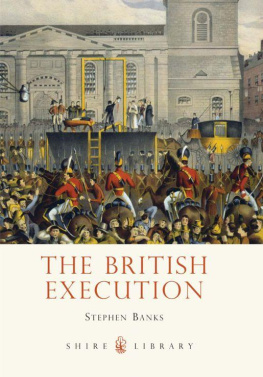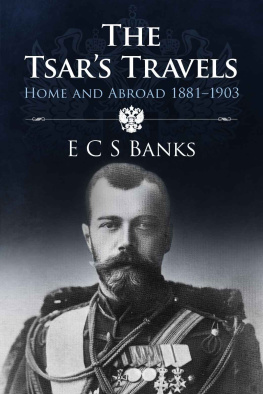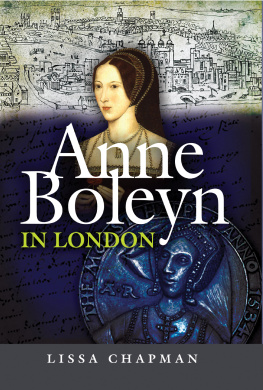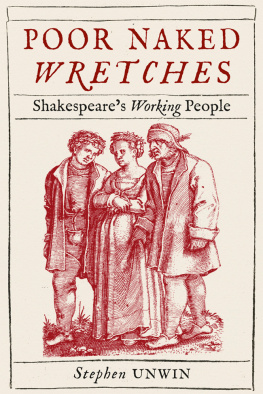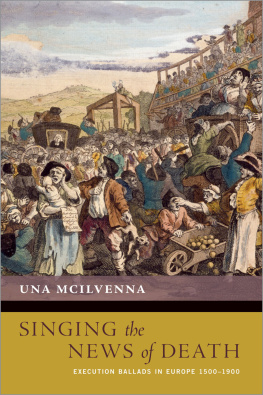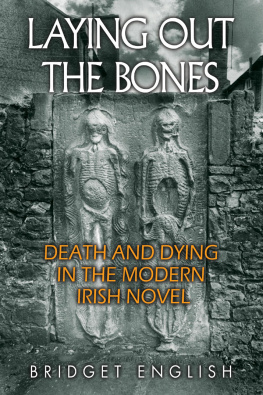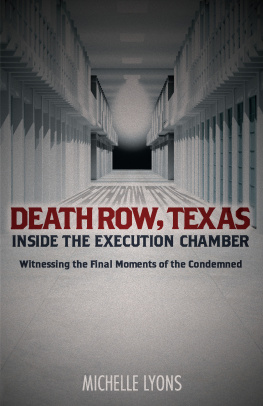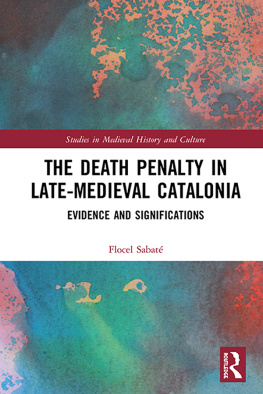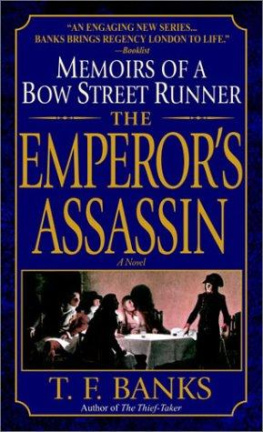THE BRITISH EXECUTION
Stephen Banks
The block, axe and executioners mask at the Tower of London. (Painting by John Fulleylove in Arthur Poyser, The Tower of London, 1908.)
SHIRE PUBLICATIONS
On a trumped-up accusation by Titus Oates, Edward Coleman is drawn up on a hurdle to Tyburn to be executed for his alleged part in a suspected Popish Plot: with him is Jack Ketch the executioner. (Woodcut illustration to the Bagford Ballads.)
CONTENTS
Hugh Despenser the Younger, 1st Lord Despenser (c. 12861326) is disembowelled, his entrails are burnt and he is then quartered by the supporters of Queen Isabella. (Froissarts Chronicles, Vol. 1, Plate II, c. 1470)
THE FATAL PERFORMANCE
T HIS BOOK concerns itself with capital punishment in Britain from the time of the Tudor kings up until the final execution in 1964. By way of an introduction however, it is useful both to visit earlier periods in British history and to observe that capital punishment was rarely a simple matter of putting a criminal to death quickly and discreetly. Rather it was a performance, held in public until 1868, and one that was designed to convey many messages to those who might see it. Historically, the scaffold was seen as a place of educational opportunity, where one could explain the character of the crime, justify the appointed retribution and hopefully deter further offences.
Execution, then, was theatre, with its own conventions and symbolism, and this has been true since ancient times. Justinians Institutes tells us that when a man in Rome killed his own father, the Romans displayed their horror by sewing him up in a sack with a dog, a cock, a snake and a monkey and hurling him from the Tarpeian Rock. In England, as in other countries, traitors were dragged to their deaths on hurdles to signify that their feet were unworthy of touching the ground. Heretics sent to the stake were forced to wear vestments or hats depicting devils and flames, a reminder that the burning of their body was but a foretaste of the eternal fire that awaited them.
Doubtless, many spectators derived satisfaction from seeing due punishment inflicted. In feudal societies, however, a crime was as much an offence against the monarch as against any individual or community. People were subjects of, and to an extent, the property of, their sovereign, so if one man killed another he deprived the king of the service or value of the deceased. A serious crime could therefore be construed as an act of rebellion. The French philosopher, Michel Foucault, writing of a particularly prolonged execution in France in 1757, argued that the purpose of torture and protracted punishments was to demonstrate that the power of the king was overwhelming and able to defeat any attempt to injure his sovereignty.
In Anglo-Saxon England things were somewhat different. Central power was weak and the kings were concerned to prevent blood feuds among warring families or clans. Capital punishment was inflicted, but there was also a system of compensation whereby a man who had slain another could pay blood money to the murdered mans family and so prevent either a feud or a prosecution. The system seems, however, to have been swept aside with the Norman invasion of 1066. It is very likely that the number of executions increased under the Normans, not merely because of the disappearance of blood money, but also because of the establishment of Forest Laws. These were designed to preserve game over large swathes of England for the sporting nobility, and poachers were liable to be flayed, mutilated or hanged. The system of compensation was certainly gone by the time that Henry II (113389) centralised many aspects of justice and established trial by jury in the royal courts in 1166.

A contemporary woodcut depicting the burning of the Czech religious reformer Johannes Hus in 1415. Note the heretics crown depicting Satans demons.
Hanging meant slow asphyxiation. It was only in the latter part of the nineteenth century that British hangmen became able to calculate drops and to position the noose in such as way as to break the neck and cause almost instant death. Even then, as we shall see, mistakes were made. In the earlier period a turning off often meant little more than a rope being thrown around a tree while the culprit stood up in a cart with the noose around his neck. The cart drove off and the felon was left suspended a few feet from the ground. Relatives might rush forward to tug upon the feet of the swinging felon in order to speed his demise and it is in this context that the beheading of well-born offenders should be understood as having evolved as a merciful concession to their gentility.
A hanging in Anglo-Saxon England. Death came by slow strangulation. (Reproduction of a manuscript in Strutts Antiquities (1793), Vol. I, Plate XV.)
Traitors, no matter how highly born, could expect more exemplary punishment. High and petty treason were defined in the Treason Act of 1351, but terrible penalties were already being imposed. Jean Froissarts Chronicles gives a detailed account of the sentence imposed in 1326 upon Hugh Despenser the Younger, a one-time favourite of Edward II. After his faction was defeated by Queen Isabella, Hugh was dragged by horses to a high gallows and suspended for a time. However, before he could expire he was cut down and tied to a ladder. His genitals were then cut off and thrown into a fire and his intestines were slowly pulled out from his body and burnt. According to Froissart, he emitted one long hideous shriek before his heart was finally cut out, his body quartered and beheaded and the pieces exhibited on the gates of London.
As troubled as England was throughout the High Middle Ages (c. 10001300) and into the Late Middle Ages (c. 13001500), executioners of these times were little troubled either by heretics or witches. Heresy did not appear in England until the time of the theologian John Wycliffe (c. 133084). Wycliffes followers, a somewhat disparate group known as the Lollards, have been connected, albeit not without some difficulty, with the Protestants of the later Reformation. Lollardy, among the middling classes, penetrated Oxford University and influenced the royal court for a time. Henry IV (13671413) and Henry V (13861422) both determined to stamp it out. A statute in 1401, De Heretico Comburendo (2 Hen.4 c.15), authorised the burning of heretics, and one of the most important Lollards to suffer this fate was Sir John Oldcastle. In 1417, he was hung in chains over a fire at St Giles Fields in London. Lollardy did not entirely disappear, however, and throughout the fifteenth century there were occasional burnings.


